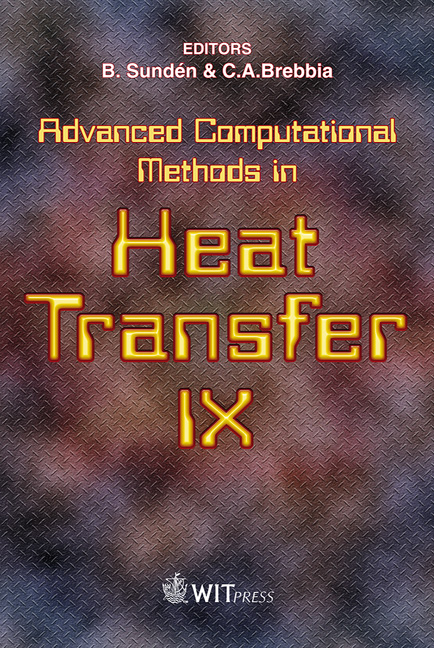Convective Heat Transfer Investigations At Parts Of A Generator Circuit Breaker
Price
Free (open access)
Transaction
Volume
53
Pages
10
Published
2006
Size
1,427 kb
Paper DOI
10.2495/HT060381
Copyright
WIT Press
Author(s)
T. Magier, H. Löbl, S. Großmann, M. Lakner & T. Schoenemann
Abstract
Current carrying equipment for power engineering is getting smaller and more compact in order to meet customer demands. In spite of small dimensions it should be able to carry still growing currents, which lead to high current densities in the current carrying parts and therefore in high heating of these parts. Due to small dimensions the heat transfer from these parts is restricted too. To assure that the maximum temperature rise in equipment parts stays under the allowed temperature rise fixed in the standards, the temperatures in these parts should be calculated first (for instance with thermal networks). The power losses produced in the current carrying parts are transferred through convection, radiation and conduction from these parts to the ambient. For better cooling effectiveness several heat sink types, for example on the parts of generator circuit breakers can be used. To improve the accuracy of convective heat transfer calculation with thermal networks, the n1, c1 factors for affinity function Nu = c1(GrPr)n1 for natural convection, depending on the angle of the heat sink to the airflow, have been determined experimentally. Another point of thermal investigation is heat sink cooling with air, while the air is pre-warmed by other hot parts below the heat sink. This kind of interaction appears particularly in very compact devices and should therefore be investigated for a better accuracy of temperature calculation with thermal networks. Investigations have been carried out for different average temperatures of the heat plate, which was placed below the heat sink and for different heat sink positions. Keywords: thermal networks, heat transfer coefficient, affinity function, natural convection.
Keywords
thermal networks, heat transfer coefficient, affinity function, natural convection.





